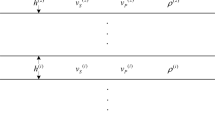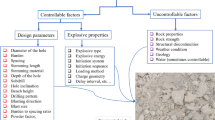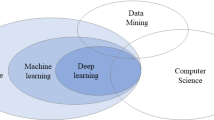Abstract
This paper establishes an intelligent framework for real-time prediction of trajectory deviations in the process of earth pressure balance (EPB) tunnelling. A hybrid model was developed which integrates principal component analysis (PCA) and a gated recurrent unit (GRU). PCA was adopted to mine the interrelated input parameters and reduce the accompanying data noise. A scroll window mode was implemented in the GRU to predict the shield movement in real time. The proposed PCA–GRU model was implemented and validated through a case study of the Guang-Fo intercity railway in Guangzhou, China. Another three machine learning models were also used for comparison. The results revealed that the proposed model predicted the shield moving trajectory with higher precision than other models. The implications for trajectory regulation were discussed using field data. The proposed prediction framework represents a promising solution for real-time prediction of the shield moving trajectory in EPB tunnelling.











Similar content being viewed by others
References
Armaghani DJ, Mohamad ET, Narayanasamy MS, Narita N, Yagiz S (2017) Development of hybrid intelligent models for predicting TBM penetration rate in hard rock condition. Tunn Undergr Space Technol 63:29–43. https://doi.org/10.1016/j.tust.2016.12.009
Atangana Njock PG, Shen SL, Zhou A, Lyu HM (2020) Evaluation of soil liquefaction using AI technology incorporating a coupled ENN/t-SNE model. Soil Dyn Earthq Eng 130:105988. https://doi.org/10.1016/j.soildyn.2019.105988
Bilgin N (2016) An appraisal of TBM performances in Turkey in difficult ground conditions and some recommendations. Tunn Undergr Space Technol 57:265–276. https://doi.org/10.1016/j.tust.2016.01.038
Cortes C, Vapnik VN (1995) Support-vector networks. Mach Learn 20(3):273–297
Chen RP, Zhang P, Wu HN, Wang ZT, Zhong ZQ (2019) Prediction of shield tunneling-induced ground settlement using machine learning techniques. Front Struct Civ Eng 13:1363–1378. https://doi.org/10.1007/s11709-019-0561-3
Cheng MY, Kusoemo D, Gosno RA (2020) Text mining-based construction site accident classification using hybrid supervised machine learning. Autom Constr 118:103265. https://doi.org/10.1016/j.autcon.2020.103265
Cho K, Van Merrienboer B, Gulcehre C, Bahdanau D, Bougares F, Schwenk H, Bengio Y (2014) Learning phrase representations using RNN encoder-decoder for statistical machine translation. arXiv preprint https://arxiv.org/abs/1406.1078
Elbaz K, Shen SL, Tan Y, Cheng WC (2018) Investigation into performance of deep excavation in sand covered karst: a case report. Soils Found 58(4):1042–1058. https://doi.org/10.1016/j.sandf.2018.03.012
Elbaz K, Shen SL, Cheng WC, Arulrajah A (2018) Cutter-disc consumption during earth pressure balance tunnelling in mixed strata. Geotech Eng ICE Proc 171(4):363–376. https://doi.org/10.1680/jgeen.17.00117
Elbaz K, Shen SL, Sun WJ, Yin ZY, Zhou A (2020) Prediction model of shield performance during tunneling via incorporating improved Particle Swarm Optimization into ANFIS. IEEE Access 8:39659–39671. https://doi.org/10.1109/ACCESS.2020.2974058
Elbaz K, Shen SL, Zhou A, Yin ZY, Lyu HM (2021) Prediction of disc cutter life during shield tunneling with AI via the incorporation of a genetic algorithm into a GMDH-type neural network. Engineering 7(2):238–251. https://doi.org/10.1016/j.eng.2020.02.016
Gao MY, Zhang N, Shen SL, Zhou A (2020) Real-time dynamic regulation of earth pressure for shield tunnelling using GRU deep learning method. IEEE Access 8:64310–64323. https://doi.org/10.1109/ACCESS.2020.2984515
Gao S, Huang YF, Zhang S, Han JC, Wang GQ, Zhang MX, Lin QS (2020) Short-term runoff prediction with GRU and LSTM networks without requiring time step optimization during sample generation. J Hydrol 589:125188. https://doi.org/10.1016/j.jhydrol.2020.125188
Gajjar S, Palazoglu A (2016) A data-driven multidimensional visualization technique for process fault detection and diagnosis. Chemom Intell Lab Syst 154:122–136. https://doi.org/10.1016/j.chemolab.2016.03.027
Houdt GV, Mosquera C, Nápoles G (2020) A review on the long short-term memory model. Artif Intell Rev 53:5929–5955. https://doi.org/10.1007/s10462-020-09838-1
Hong WC, Pai PF (2007) Potential assessment of the support vector regression technique in rainfall forecasting. Water Resour Manag 21:495–513. https://doi.org/10.1007/s11269-006-9026-2
Huang HW, Li QT, Zhang DM (2018) Deep learning based image recognition for crack and leakage defects of metro shield tunnel. Tunn Undergr Space Technol 77:166–176. https://doi.org/10.1016/j.tust.2018.04.002
James G, Witten D, Hastie T, Tibshirani R (2013) An introduction to statistical learning with application in R, 1st edn. Springer, Heidelberg, pp 373–418
Jong SC, Ong DEL, Oh E (2021) State-of-the-art review of geotechnical-driven artificial intelligence techniques in underground soil-structure interaction. Tunn Undergr Space Technol 113:103946. https://doi.org/10.1016/j.tust.2021.103946
Koopialipoor M, Nikouei SS, Marto A, Fahimifar A, Armaghani DJ, Mohamad ET (2018) Predicting tunnel boring machine performance through a new model based on the group method of data handling. Bull Eng Geol Environ 78:3799–3813. https://doi.org/10.1007/s10064-018-1349-8
Li XF, Gong GF (2019) Predictive control of slurry pressure balance in shield tunneling using diagonal recurrent neural network and evolved particle swarm optimization. Autom Constr 107:102928. https://doi.org/10.1016/j.autcon.2019.102928
Lin SS, Shen SL, Zhang N, Zhou A (2021) Modelling the performance of EPB shield tunnelling using machine and deep learning algorithms. Geosci Front 12:101177. https://doi.org/10.1016/j.gsf.2021.101177
Lin SS, Shen SL, Zhou A, Xu YS (2021) Novel model for risk identification during karst excavation. Reliab Eng Syst Saf 209:107435. https://doi.org/10.1016/j.ress.2021.107435
Lin SS, Shen SL, Lyu HM, Zhou A (2021) Assessment and management of lake eutrophication: a case study in Lake Erhai, China. Sci Total Environ 751(2021):141618. https://doi.org/10.1016/j.scitotenv.2020.141618
Lin SS, Shen SL, Zhou A, Xu YS (2020) Approach based on TOPSIS and Monte Carlo simulation methods to evaluate lake eutrophication levels. Water Res 187(2020):116437. https://doi.org/10.1016/j.watres.2020.116437
Lin SS, Shen SL, Zhou A, Xu YS (2021) Risk assessment and management of excavation system based on fuzzy set theory and machine learning methods. Autom Constr 122:103490. https://doi.org/10.1016/j.autcon.2020.103490
Lyu HM, Shen SL, Wu YX, Zhou A (2021) Calculation of groundwater head distribution with a close barrier during excavation dewatering in confined aquifer. Geosci Front 12:791–803. https://doi.org/10.1016/j.gsf.2020.08.002
Lyu HM, Shen SL, Zhou A (2021) The development of IFN-SPA: a new risk assessment method of urban water quality and its application in Shanghai. J Clean Prod 282(2021):124542. https://doi.org/10.1016/j.jclepro.2020.124542
Ma HS, Yin LJ, Gong QM, Wang J (2015) TBM tunneling in mixed-face ground: Problems and solutions. Int J Min Sci Technol 25(4):641–647. https://doi.org/10.1016/j.ijmst.2015.05.019
Ma J, Ding YX, Cheng JCP, Jiang FF, Wan ZW (2019) A temporal-spatial interpolation and extrapolation method based on geographic long short-term memory neural network for PM2.5. J Clean Prod 237:117729. https://doi.org/10.1016/j.jclepro.2019.117729
Mahmoodzadeh A, Mohammadi M, Daraei A, Faraj RH, Omer RMD, Sherwani AFH (2020) Decision-making in tunneling using artificial intelligence tools. Tunn Undergr Space Technol 103:103514. https://doi.org/10.1016/j.tust.2020.103514
Ren DJ, Shen SL, Cheng WC, Zhang N, Wang ZF (2016) Geological formation and geo-hazards during subway construction in Guangzhou. Environ Earth Sci 75(11):934. https://doi.org/10.1007/s12665-016-5710-6
Ren DJ, Shen JS, Chai JC, Zhou A (2018) Analysis of disk cutter failure in shield tunnelling using 3D circular cutting theory. Eng Fail Anal 90(2018):23–35. https://doi.org/10.1016/j.engfailanal.2018.02.015
Ren DJ, Shen SL, Arulrajah A, Cheng WC (2018) Prediction model of TBM disc cutter wear during tunnelling in heterogeneous ground. Rock Mech Rock Eng 51(11):3599–3611. https://doi.org/10.1007/s00603-018-1549-3
Rezaee M, Mojtahedi SFF, Taherabadi E, Soleymani K, Pejman M (2020) Prediction of shear strength parameters of hydrocarbon contaminated sand based on machine learning methods. Georisk Assess Manag Risk Eng Syst Geohazards. https://doi.org/10.1080/17499518.2020.1861633
Ruder S (2017) An overview of gradient descent optimization algorithms. https://arxiv.org/abs/1609.04747v04742
Sak H, Senior A, Beaufays F (2014) Long short-term memory based recurrent neural network architectures for large vocabulary speech recognition. Comput Sci 518(7540):529–533
Sarir P, Shen SL, Wang ZF, Chen J, Horpibulsuk S, Pham BT (2021) Optimum model for bearing capacity of concrete-steel columns with AI technology via incorporating the algorithms of IWO and ABC. Eng Comput 37(2):797–807. https://doi.org/10.1007/s00366-019-00855-5
Shen SL, Atangana Njock PG, Zhou A, Lyu HM (2021) Dynamic prediction of jet grouted column diameter in soft soil by using Bi-LSTM deep learning. Acta Geotech 16(1):303–315. https://doi.org/10.1007/s11440-020-01005-8
Shen SL, Lyu HM, Zhou A, Lu LH, Li G, Hu BB (2021) Automatic control of groundwater balance to combat dewatering during construction of a metro system. Autom Constr 123:103536. https://doi.org/10.1016/j.autcon.2020.103536
Salimi A, Faradonbeh RS, Monjezi M, Moormann C (2018) TBM performance estimation using a classification and regression tree (CART) technique. Bull Eng Geol Environ 77:429–440. https://doi.org/10.1007/s10064-016-0969-0
Sugimoto M, Sramoon A (2002) Theoretical model of shield behavior during excavation. I: theory. J Geotech Geoenviron Eng 128(2):138–155. https://doi.org/10.1061/(ASCE)1090-0241(2002)128:2(138)
Verbanck M, Josse J, Husson F (2015) Regularised PCA to denoise and visualise data. Stat Comput 25:471–486. https://doi.org/10.1007/s11222-013-9444-y
Wang LT, Yang X, Gong GF, Du JN (2018) Pose and trajectory control of shield tunneling machine in complicated stratum. Autom Constr 93:192–199. https://doi.org/10.1016/j.autcon.2018.05.020
Wang P, Kong X, Guo Z, Hu L (2019) Prediction of axis attitude deviation and deviation correction method based on data driven during shield tunneling. IEEE Access 7:163487–163501. https://doi.org/10.1109/ACCESS.2019.2952649
Wang L, Wu CZ, Tang LB, Zhang WG, Lacasse S, Liu HL, Gao L (2020) Efficient reliability analysis of earth dam slope stability using extreme gradient boosting method. Acta Geotech 15:3135–3150. https://doi.org/10.1007/s11440-020-00962-4
Wu HN, Shen SL, Chen RP, Zhou A (2020) Three-dimensional numerical modelling on localised leakage in segmental lining of shield tunnels. Comput Geotech 122:103549. https://doi.org/10.1016/j.compgeo.2020.103549
Wu YX, Lyu HM, Shen SL, Zhou A (2020) A three-dimensional fluid-solid coupled numerical modeling of the barrier leakage below the excavation surface due to dewatering. Hydrogeol J 28:1449–1463. https://doi.org/10.1007/s10040-020-02142-w
Xu H, Zhou J, Asteris PG, Armaghani DJ, Tahir MM (2019) Supervised machine learning techniques to the prediction of tunnel boring machine penetration rate. Appl Sci 9(18):3715. https://doi.org/10.3390/app9183715
Yang JX, Zhang LK, Chen C, Li YF, Li R, Wang GP, Jiang SX, Zeng Z (2020) A hierarchical deep convolutional neural network and gated recurrent unit framework for structural damage detection. Inf Sci 540:117–130. https://doi.org/10.1016/j.ins.2020.05.090
Yan T, Shen SL, Zhou A, Lyu HM (2021) Construction efficiency during shield tunnelling in soft deposit of Tianjin. Tunn Undergr Space Technol 112:103917. https://doi.org/10.1016/j.tust.2020.103917
Zhang K, Lyu HM, Shen SL, Zhou A, Yin ZY (2020) Evolutionary hybrid neural network approach to predict shield tunneling-induced ground settlements. Tunn Undergr Space Technol 106:103594. https://doi.org/10.1016/j.tust.2020.103594
Zhang K, Shen SL, Zhou A (2020) Dynamic brittle fracture with eigenerosion enhanced material point method. Int J Numer Methods Eng 121(17):3768–3794. https://doi.org/10.1002/nme.6381
Zhang K, Shen SL, Zhou A, Balzani D (2021) Truncated hierarchical B-spline MPM for large deformation geotechnical problems. Comput Geotech 134:104097. https://doi.org/10.1016/j.compgeo.2021.104097
Zhang N, Shen SL, Zhou AN, Lyu HM (2020) Challenges of earth pressure balance tunnelling in weathered granite with boulders. Proc Inst Civ Eng Geotech Eng. https://doi.org/10.1680/jgeen.20.00030
Zhang ZH, Ma LH (2018) Attitude correction system and cooperative control of tunnel boring machine. Int J Pattern Recognit Artif Intell 32(11):1–14. https://doi.org/10.1142/S0218001418590188
Zhang P, Chen RP, Wu HN (2019) Real-time analysis and regulation of EPB shield steering using random forest. Autom Constr 106:102860. https://doi.org/10.1016/j.autcon.2019.102860
Zhang P, Wu HN, Chen RP, Chan THT (2020) Hybrid meta-heuristic and machine learning algorithms for tunneling-induced settlement prediction: a comparative study. Tunn Undergr Space Technol 99:103383. https://doi.org/10.1016/j.tust.2020.103383
Zhang P, Yin Z-Y, Jin YF, Chan T, Gao FP (2021) Intelligent modelling of clay compressibility using hybrid meta-heuristic and machine learning algorithms. Geosci Front 12:441–452. https://doi.org/10.1016/j.gsf.2020.02.014
Zhang P, Yin Z-Y, Jin YF, Ye GL (2020) An AI-based model for describing cyclic characteristics of granular materials. Int J Numer Anal Methods Geomech 44(9):1315–1335. https://doi.org/10.1002/nag.3063
Zhang QL, Liu ZY, Tan JR (2019) Prediction of geological conditions for a tunnel boring machine using big operational data. Autom Constr 100:73–83. https://doi.org/10.1016/j.autcon.2018.12.022
Zhang WG, Goh ATC (2013) Multivariate adaptive regression splines for analysis of geotechnical engineering systems. Comput Geotech 48:82–95
Zhang WG, Goh ATC (2016) Multivariate adaptive regression splines and neural network models for prediction of pile drivability. Geosci Front 7:45–52
Zhang WG, Zhang RH, Wang W, Zhang F, Goh ATC (2019) A multivariate adaptive regression splines model for determining horizontal wall deflection envelope for braced excavations in clays. Tunn Undergr Space Technol 84:461–471
Zhang WG, Zhang RH, Wu CZ, Goh ATC, Wang L (2020) Assessment of basal heave stability for braced excavations in anisotropic clay using extreme gradient boosting and random forest regression. Undergr Space. https://doi.org/10.1016/j.undsp.2020.03.001
Zhang WG, Wu CZ, Zhong HY, Li YQ, Wang L (2020) Prediction of undrained shear strength using extreme gradient boosting and random forest based on Bayesian optimization. Geosci Front 12(1):469–477. https://doi.org/10.1016/j.gsf.2020.03.007
Zhang WG, Li HR, Wu CZ, Li YQ, Liu ZQ, Liu HL (2020) Soft computing approach for prediction of surface settlement induced by earth pressure balance shield tunneling. Undergr Space. https://doi.org/10.1016/j.undsp.2019.12.003
Zhang WG, Li HR, Li YQ, Liu HL, Chen YM, Ding XM (2021) Application of deep learning algorithms in geotechnical engineering: a short critical review. Artif Intell Rev. https://doi.org/10.1007/s10462-021-09967-1
Zhang ZQ, Zhang KK, Dong WJ, Zhang B (2020) Study of rock-cutting process by disc cutters in mixed ground based on three-dimensional particle flow model. Rock Mech Rock Eng 53:3485–3506. https://doi.org/10.1007/s00603-020-02118-y
Zhang N, Shen SL, Zhou A, Jin YF (2021) Application of LSTM approach for modelling stress–strain behaviour of soil. Appl Soft Comput 100(2021):106959. https://doi.org/10.1016/j.asoc.2020.106959
Zheng Z, Chen WH, Wu XM, Chen PCY, Liu JM (2017) LSTM network: a deep learning approach for short-term traffic forecast. IET Intell Transp Syst 11(2):68–75. https://doi.org/10.1049/iet-its.2016.0208
Zhou C, Ding LY, He R (2013) PSO-based Elman neural network model for predictive control of air chamber pressure in slurry shield tunneling under Yangtze River. Autom Constr 36:208–217. https://doi.org/10.1016/j.autcon.2013.03.001
Zhou C, Xu H, Ding L, Wei L, Zhou Y (2019) Dynamic prediction for attitude and position in shield tunneling: a deep learning method. Autom Constr 105:102840. https://doi.org/10.1016/j.autcon.2019.102840
Zou AM, de Ruiter AHJ, Kumar KD (2019) Disturbance observer-based attitude control for spacecraft with input MRS. IEEE Trans Aerosp Electron Syst 55(1):384–396. https://doi.org/10.1109/TAES.2018.2852369
Zou AM, Kumar KD, de Ruiter AHJ (2020) Finite-time spacecraft attitude control under input magnitude and rate saturation. Nonlinear Dyn 99:2201–2217. https://doi.org/10.1007/s11071-019-05388-6
Author information
Authors and Affiliations
Corresponding author
Additional information
Publisher's Note
Springer Nature remains neutral with regard to jurisdictional claims in published maps and institutional affiliations.
Rights and permissions
About this article
Cite this article
Zhang, N., Zhang, N., Zheng, Q. et al. Real-time prediction of shield moving trajectory during tunnelling using GRU deep neural network. Acta Geotech. 17, 1167–1182 (2022). https://doi.org/10.1007/s11440-021-01319-1
Received:
Accepted:
Published:
Issue Date:
DOI: https://doi.org/10.1007/s11440-021-01319-1




